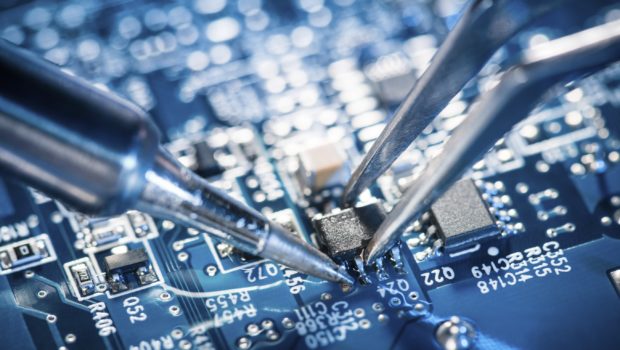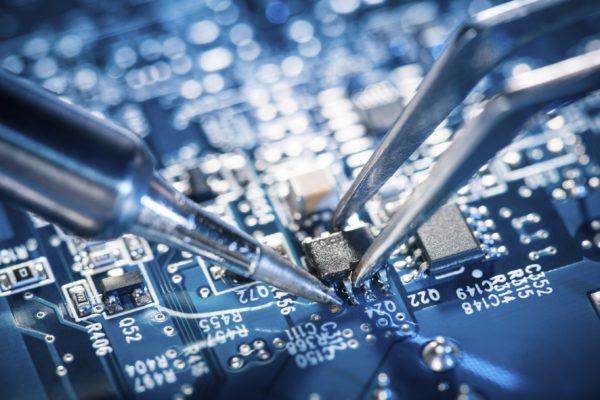Tiny Technology: Microelectronics Explained
Imagine a world without personal computers, laptops, or cellphones. Imagine a world without cameras or camcorders, stereos or walkmans, microwaves, or any other modern appliance. This is actually the type of world we would live in were it not for the existence of microelectronics.
So just what are microelectronics?
“Microelectronics” refers to a subfield of electronics, dealing particularly with microscopic elements to study and manufacture extremely small electronic designs and components. The language inherent in the word itself — “microelectronics” — suggests that these electronics are dealt with on a micrometer-scale, or even smaller.
Essentially, the field of microelectronics provides products and components for the field of electronics. Wikipedia mentions that many “components of normal electronic design are available in a microelectronic equivalent” which “include transistors, capacitors, inductors, resistors, diodes and (naturally) insulators and conductors”.
Over time, the scale of microelectronics has decreased, while the demand for products produced in this field has risen. So just what are microelectronics being used for?
What Are Microelectronics Being Used For?
Honestly, the answer here is “just about everything”.
In fact, the Pentagon just recently announced its plans to increase funding in microelectronics, in order to keep up with other hegemonies such as China. Yasmin Tadjeh, writing for National Defense Magazine, reports that “microelectronics underpin some of the Defense Department’s top technology focus areas including quantum computing, artificial intelligence, advanced manufacturing, space and biotechnology.” Tadjeh then directly quotes Kristen Baldwin, acting deputy assistant secretary of defense for systems engineering.
“China is investing $150 billion just in microelectronics technology … and creating national and industry partnerships, not only within China but with other international partners,” she said during remarks at the Women In Defense national conference in Washington, D.C. WID is an affiliate of the National Defense Industrial Association.
One of the US government’s major concerns surrounding imports of microelectronics from China is that our neighbors in The East could potentially hide malware or other types of malicious code our US military systems.
Private companies, on the other hand, are looking at using microelectronics to create “smart-” everything. Smart refrigerators, for example, can connect to the internet using microchips and sensors that were manufactured with microelectronic components. Smart apparel, on the other hand, might feature “heart-rate capture points incorporated into the fabric and a small sensor pod that tracks speed, distance, and acceleration,” or “record muscle activity, calorie burn, and other biometrics,” according to the experts at Amsterdam Printing.
Microelectronics have been incorporated into other wearables like smart watches, and are being to used to improve remote patient monitoring as well as accuracy of personal medical record data. Other the other hand, microelectronics have also been incorporated into what Gear Nova is calling the “TrackingPoint Precision Guided Firearm,” (PGF) which is the world’s first smart rifle.
Issues Inherent to Microelectronics
While microelectronics seem to have all of the answers, there are still a few issues inherent in microelectronics. Integrated circuits, which are essentially just normal circuit boards condensed in to microelectronic chips, for example, have both advantages and disadvantages inherent to their use. According to Manyara’s expert column, there are at least five:
- If one component in an integration fails, that means the whole circuit has to be replaced — which essentially means replacing the entire smart chip.
- Integrated circuits have limited capacitances. This calls for external components if the capacitance needs an extension.
- It is impossible to fabricate transformers or any other kind of inductor onto the integrated circuits and again calling for a discrete circuit.
- Power that integrated circuits can produce is limited and calls for extension.
- Integrated circuits are not flexible. Their components cannot be modified and neither can the parameters of operation.
Howard Siegerman, Ph.D, in a white paper published via Berkshire Corporation’s website, also mentions that the issue of ion contamination in microelectronics “is of critical importance because electronic device failures have been directly linked to the presence of trace levels of ions.”
Ultimately, however, the issues inherent to microelectronics are not enough to outweigh the benefits. The future of smart-everything, the future that we envision with AI and the IoT — all of that will be made a reality because of microelectronics. For something so small, the implications are enormous.











![How can Parents Sustain Healthy Relations with Their Teens [Infographic]](https://technofaq.org/wp-content/uploads/2016/07/ig_HEAder-150x150.jpg)




